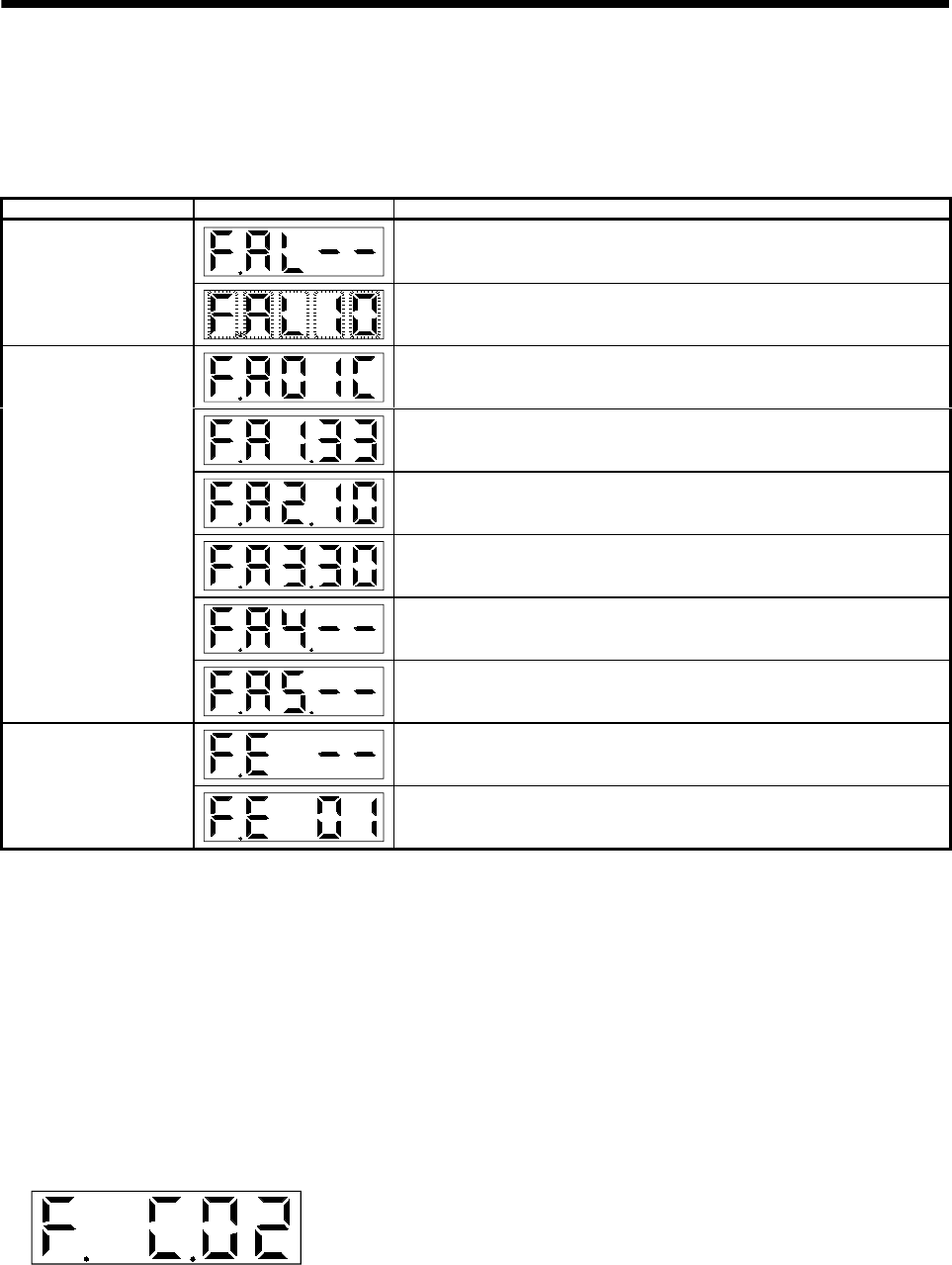
4 - 8
4. OPERATION AND DISPLAY
4.2.4 Alarm mode of interface unit
The current alarm, past alarm history and parameter error are displayed. The lower 2 digits on the
display indicate the alarm number that has occurred or the parameter number in error. Display examples
are shown below.
Name Display Description
Indicates no occurrence of an alarm in the interface unit.
Current alarm
Indicates the occurrence of overvoltage (A.10) in the interface unit.
Flickers at occurrence of the alarm.
Indicates that the last alarm is base unit error (A.1C) in the interface
unit.
Indicates that the second alarm in the past is overvoltage (A.33) in the
interface unit.
Indicates that the third alarm in the past is undervoltage (A.10) in the
interface unit.
Indicates that the fourth alarm in the past is over regenerative (A.30) in
the interface unit.
Indicates that there is no fifth alarm in the past of the interface unit.
Alarm history
Indicates that there is no sixth alarm in the past of the interface unit.
Indicates no occurrence of parameter error (A.37) of the interface unit.
Parameter error No.
Indicates that the data of parameter No. 1 is faulty of the interface unit.
Functions at occurrence of an alarm
(1) Any mode screen displays the current alarm.
(2) The other screen is visible during occurrence of an alarm. At this time, the decimal point in the fourth
digit flickers.
(3) For any alarm, remove its cause and clear it in any of the following: (for clearable alarms, refer to
Section 9.2)
(a) Switch power OFF, then ON.
(b) Press the "SET" button on the current alarm screen.
(4) Use IFU parameter No. 0 to clear the alarm history.
(5) Pressing "SET" button on the alarm history display screen for 2s or longer shows the following detailed
information display screen. Note that this is provided for maintenance by the manufacturer.
(6) Press "UP" or "DOWN" button to move to the next history.
(7) Pressing the "MODE" button on the alarm detail display screen returns to the alarm history display.


















